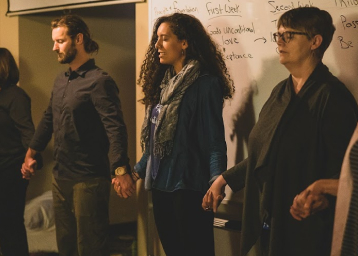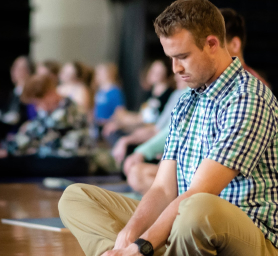


Contemplative Prayer
En la oración contemplativa, buscamos conocer a Dios directamente en lugar de buscar conocer a Dios. Buscamos experimentar la presencia de Dios.
Tiene profundas raíces en la tradición cristiana, que se remonta al monaquismo cristiano del siglo IV en Egipto. En el siglo V, San Juan Casiano transportó la tradición de la oración meditativa al Occidente cristiano. San Benito (480-547) hizo un uso extensivo de la colección de enseñanzas de John Cassian y, por lo tanto, Cassian tuvo una gran influencia en la vida monástica en Occidente, donde esta tradición de oración se mantuvo fuerte hasta que se perdió en el momento de la Reforma. .
Poco antes de la Reforma, La nube del desconocimiento fue escrita por un escritor católico inglés desconocido del siglo XIV. Místicos como Teresa de Ávila (1515-1582) y San Juan de la Cruz (1542-1591) también escriben sobre el poder de la oración contemplativa.
The long period dating from the 16th century Reformation up until Vatican II was, with just a few exceptions, a period when contemplative prayer in the Christian tradition went into hiding. Quietism was a contemplative movement found mainly in Italy and France. It espoused complete passivity and abandonment to God through an attitude of surrender in obscure faith. It discouraged all other forms of prayer and spiritual practices, including acts of virtue and devotion. Even evil actions were thought not to be sinful as long as the soul remained passive and resigned. Quietism was condemned because of moral implications at the Council of Trent in 1545. This resulted in the suppression of the monasteries in many countries and the prosecution by the Inquisition of forms of quiet prayer associated with suspicious illuminating experiences. (Even Ignatius was subject to this!)
Contemporary teachers have brought the scattered elements of the tradition together into a regularized and synthesized presentation for modern people. The CENTERING PRAYER movement was co-founded by two Trappist monks – Thomas Keating and M. Basil Pennington – and was deeply influenced by the work of a third Trappist monk Thomas Merton. CHRISTIAN MEDITATION came from two Benedictine monks – John Main and Laurence Freeman.
Both schools use the same source material, but there is a difference in emphasis on the importance attributed to saying the sacred word from the beginning to the end of the meditation.


CÓMO HACER LA CONTEMPLACIÓN IGNATIANA
Find a space that is relatively free of distractions and place yourself in a comfortable position
Choose a sacred word or short phrase as a tool for gathering your focus and intention
When you are ready, begin saying your sacred word slowly, distinctly, rhythmically
When you notice your mind has wandered, come back to your sacred word
It is recommended you sit for 20 minutes, twice a day